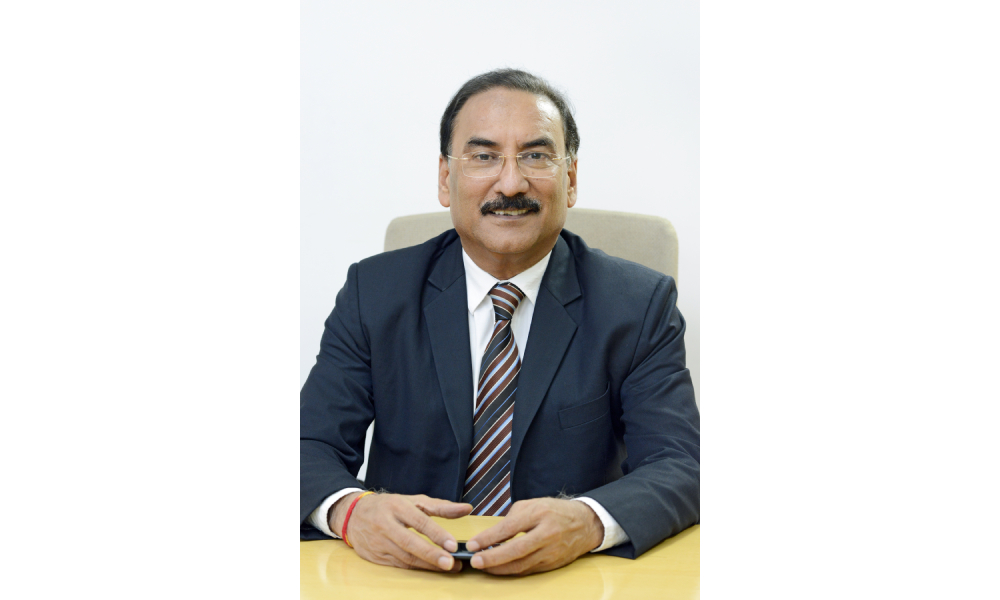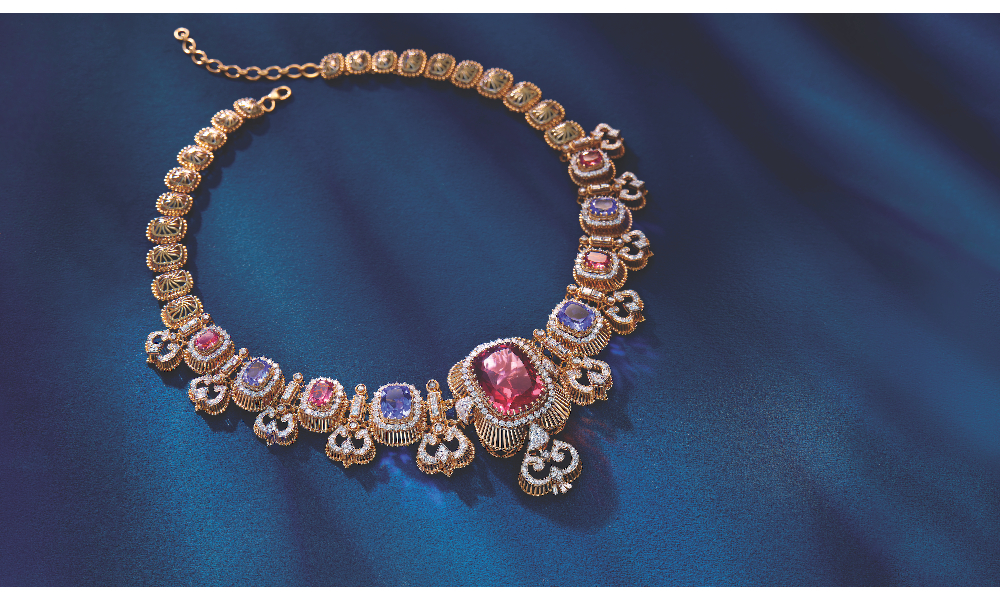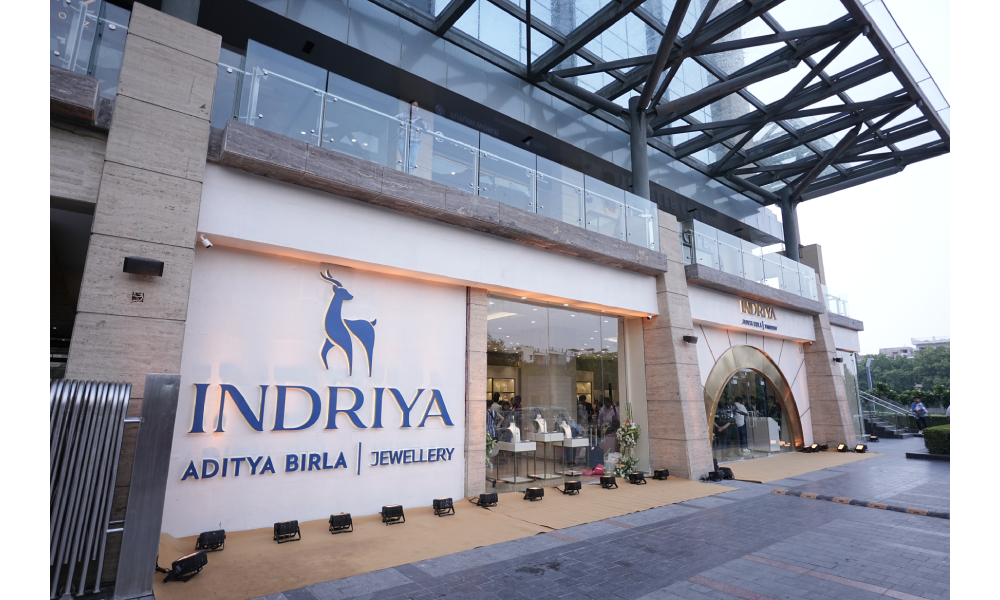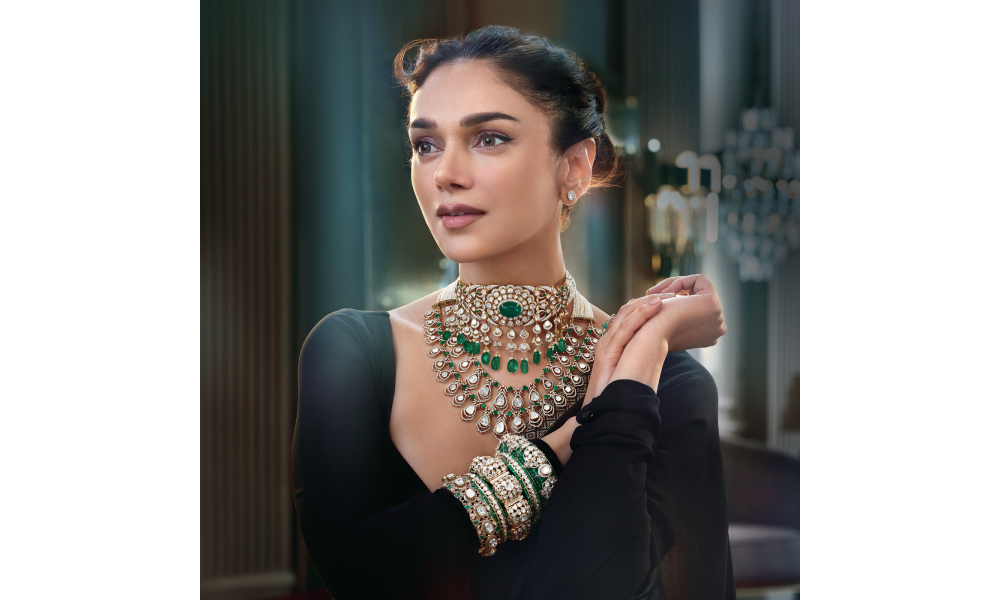Aditya Birla Group, one of India’s largest conglomerates with a market capitalization of $100 billion entered the country’s burgeoning jewellery market with the launch of Indriya, earlier this summer. The Mumbai-based group will invest Rs 5,000 crores in the venture. In an exclusive interview with Solitaire International, DILIP GAUR, Director, Novel Jewels, revealed the conglomerate’s decision to enter the jewellery segment at this time and detailed the brand strategy for distinguishing itself in an increasingly saturated market. Novel Jewels Ltd. is a newly launched business within the Aditya Birla Group, under which the Indriya brand has taken shape. Shilpa Dhamija reports.
The Aditya Birla Group has been in the business of fashion and luxury retail for many years. Why has the Group decided to launch a jewellery brand now?
Jewellery has always been an attractive market and has been on our radar for some time. With our extensive experience in the luxury goods sector, we now have a better understanding of the target consumer. Previously, the Indian consumer was highly fragmented, but over the last 4-5 years, the industry has become much more formalised with the introduction of a uniform GST (Goods and Services Tax).
In the past 5 years, the share of branded jewellers has increased from 20% to 40%, whereas it took several decades to reach the initial 20%. A group like ours can add value when the industry is healthy, growth-oriented and runs with great business practices, which is why now is the right time for us to enter the Indian jewellery market.
Entering the jewellery business is also part of our strategy to expand our consumer-facing business portfolio. We recently launched a paint business as well and are also expanding our personal finance and fashion verticals.

As part of a major global conglomerate, how do you plan to elevate India’s prominence in the jewellery sector, both domestically and internationally?
India is already great in this field. No one in the world can match the artisanal craftsmanship with precious metals and gemstones the way we Indians can.
However, at a global level, we have not fully capitalised on our core skills and heritage in the jewellery sector because we don’t yet understand the power of branding. Look at how the Italians have successfully built brands. I believe the onus is on us to brand Indian karigari, Indian heritage and craftsmanship.
After having done in-depth consumer studies, we found that Indian brands still market jewellery primarily for specific occasions such as festivals, engagement and weddings. There’s not much focus on jewellery, design, or craftsmanship. For us, the jewellery product will be the hero.
As for expansion, our immediate focus is on India, but eventually, we would like to take Indriya overseas. If you recall, we were one the first groups to talk about taking India to the world, several years ago. In India, we want to cater to the global citizen with global sensibilities. We aim to link the timeless heritage with contemporary values through our jewellery designs. Once we are able to do that, we will naturally attract a lot of Indian diasporas from around the world.

How do you plan to capture a notable share of India’s highly competitive jewellery market?
We met more than 4,000 consumers across various segments to understand their buying psychology – from the time she thinks of purchasing jewellery to the time she physically buys it, including the customer’s experience on the website and during store visits.
We want Indriya to offer an immersive experience, shifting from merely buying jewellery to experiencing and exploring jewellery. I don’t think any of the other brands have put in so much thought and looked at it in a holistic way. We aim to provide a global-level experience.
Will Indriya concentrate on a specific region in India, like most jewellery brands do when they start their journey here? Given the diverse and region-specific preferences for jewellery across different parts of India.
Brands like Kalyan and Malabar originated from a particular part of the South, so it made sense for them to start there. ABG, however, is a 150-year-old brand with a pan-India presence. For us, it’s important to first get prime real estate. Another important factor is our ability to differentiate.
We will set up where there’s ease of entry, without focusing on one region alone. To start with, the North is slightly easier than the South, which is why we have stores in Delhi, Jaipur and Indore. We’ve just launched a store in Ahmedabad, and soon we will be in Mumbai and Pune. By the year end, we plan to have 25 stores in 12 cities. Over time, our priorities might even change, but our ultimate goal remains to establish a pan-India presence.

How do you envision the evolution of diamond jewellery in this market?
Indians’ love for gold will remain unmatched, but the gold consumer can also be a diamond consumer. For example, someone might buy gold for Karva Chauth but choose diamonds for a cocktail event or wedding. Therefore, we plan to create both gold and diamond jewellery for the same occasion, giving the consumer more choice
Additionally, global phenomena will also apply to India; as affluence rises, buyers will tend to upgrade their jewellery from gold to diamonds.
Among working women aged 30 to 45, many have already moved to diamonds. Our focus will be to maximise sales of diamond-studded jewellery; we want to upgrade the gold consumer to diamonds.
Will Indriya launch a sub-brand that caters to ultra wealthy consumers?
The way we are positioning Indriya, I feel it can appeal a far wider range of consumers. For example, if you look at a BMW, there are the 3, 5 and 7 series – one brand transcending the value chain from Rs. 30 lakhs to Rs. 3 crores. Pricing and premiumisation are two different issues. For us, we don’t need to create a sub-brand.
We will offer both mass premium as well as premium segments, but an uber-luxury segment will come later if needed.

Many verticals of the luxury industry are witnessing a saturation point in major global markets. For example, in China, some luxury verticals like apparel and watches are not able to find new consumers as easily as they did three years ago, due to market saturation. Do you foresee India, a key global jewellery and gold market, facing a similar saturation point in the jewellery segment?
Yes! It’s a good observation. This is definitely happening in some parts of Europe, too, but India is in a sweet spot. About 50% of the population is below 25 years of age, and the bulk of the Indian jewellery market is driven by wedding sales. For the jewellery industry, I don’t think India will reach a saturation point anytime soon. This industry can easily grow to $215 billion in the next 10 years.

